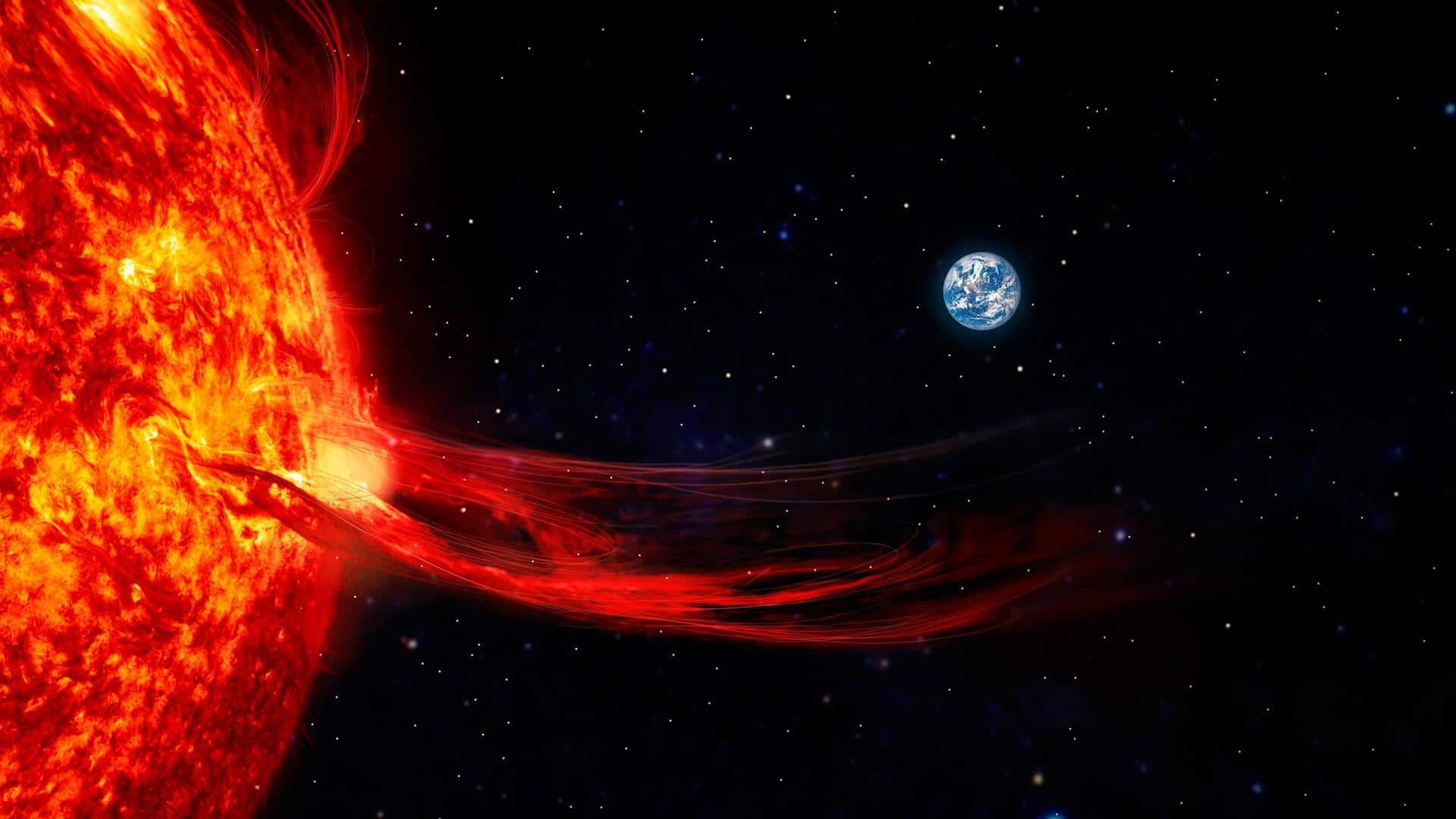
Solar flares can reach temperatures 6x hotter than previously thought
What's the story
A new study has revealed that solar flares can reach mind-boggling temperatures of 60 million degrees Celsius, nearly six times hotter than previously estimated. The findings, published in The Astrophysical Journal Letters, shed light on the Sun's most powerful eruptions and highlight the need to improve space weather forecasting models. The research also solves a decades-old mystery about unusually broadened spectral lines observed in flare light.
Flare dynamics
Solar flares and their heat
Solar flares are massive explosions of energy from the Sun's surface, releasing intense radiation and streams of high-energy particles into space. Traditionally, scientists believed these events heated particles to about 10 million°C. However, the new study shows that ions within these flares can be up to six times hotter than previously thought. The research team was led by Alexander Russell from the University of St Andrews.
Temperature disparity
Explaining temperature disparity
The study highlights a significant temperature disparity between ions and electrons during flares. While electrons heat up to 10-15 million°C, ions skyrocket beyond 60 million°C. This extreme temperature imbalance challenges long-standing assumptions about how solar plasma behaves under such explosive conditions. The findings also explain why spectral lines appear wider than expected in flare observations, as superheated ions move so rapidly that they smear these lines.
Forecast accuracy
Implications for space weather forecasting
The discovery has major implications for space weather forecasting, a field critical to modern technology and space exploration. Current models often assume a single temperature for all particles in a flare, possibly underestimating the actual energy involved. If ions indeed carry far more heat than expected, then models must adopt a multi-temperature approach, treating ions and electrons separately. This shift could greatly improve forecast accuracy, giving satellite operators, airlines, and astronauts more reliable warnings of dangerous solar storms.
Risk assessment
Need for better defenses against solar storms
Solar flares aren't just a scientific curiosity; they pose real risks, too. Radiation bursts from these eruptions can damage satellites, disrupt GPS and communication systems, and even threaten astronaut health. A clearer understanding of how hot flares truly get will help space agencies prepare better defenses against these hazards. Future research may focus on validating these findings through direct measurements of ion temperatures during flare events.